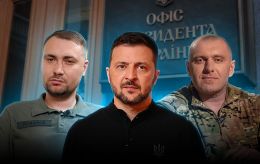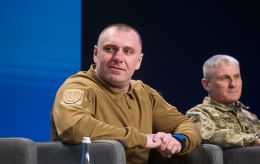Russian maximum: Putin's potential for army expansion and assessing 'pain threshold'
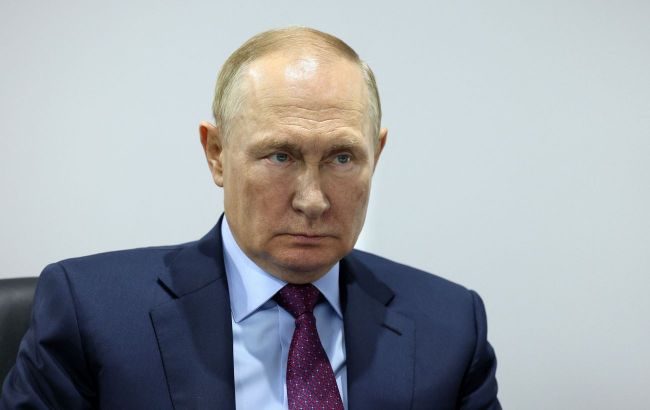 Vladimir Putin is unlikely to dare mobilize for the March 2024 elections (Photo: Getty Images)
Vladimir Putin is unlikely to dare mobilize for the March 2024 elections (Photo: Getty Images)
The Russian Federation has bolstered its occupation force in Ukraine to nearly half a million individuals. It may further increase this number, as intelligence anticipates a new mobilization after the March elections.
For more details on the number of occupiers, the combat readiness of Russian forces, and how many more Russians Vladimir Putin could mobilize, read RBC-Ukraine's material.
The material was prepared using data from The Military Balance 2023, Global Firepower rankings, statements from Russian President Vladimir Putin, representatives of Ukrainian intelligence, and comments from experts Oleksii Hetman and Oleksandr Kovalenko.
How many Russians are already in Ukraine, and are they capable of a strategic offensive?
During the year-end press conference in December, Vladimir Putin provided several figures related to the size and composition of the Russian force in Ukraine.
"The length of the confrontation line is over two thousand kilometers, and there are 617,000 people in the combat zone," he noted.
Out of this number, 244,000 were mobilized during the first wave that began in the fall of 2022.
"We had a partial mobilization, and we called up 300,000 people then... Now, I believe, 244,000 (mobilized - Ed.) are directly in the combat zone," Putin added.
The Ukrainian side considers these figures to be inflated. In December, the representative of the Defense Intelligence of Ukraine, Andrii Yusov, stated that the number of the Russian army on Ukrainian territory was 450,000 people.
At the beginning of 2024, another representative of military intelligence, Vadym Skibitskyi, provided more accurate data. According to him, the enemy's ground forces in Ukraine amount to 462,000 people. Additionally, there are 35,000 servicemen of the National Guard (Rosgvardia) ensuring the occupation regime in the seized territories. This does not account for those involved in aviation and the Navy. He also emphasized that the staffing of Russian units was maintained at a level of 92-95%.
The occupation army in Ukraine consists of several groups:
- Center and West - operate on the Lyman-Kupiansk axis
- South with responsibility in the Donetsk region
- East (two wings East and Zaporizhzhia) - operates on the administrative border of the Donetsk/Zaporizhzhia regions and in the south
- Dnipro - the left-bank part of the Kherson region
It is challenging to provide an exact number for each direction, as Russians regularly move along the front line. According to a retired Major of the Armed Forces of Ukraine, Oleksii Hetman, approximately 130,000 forces are concentrated in the Lyman-Kupiansk direction, and around 80,000 in the Bakhmut direction.
"They are trying to break through to Kostiantynivka here, although at first, they need to take Chasiv Yar. One can say the force is powerful. Recently, it has doubled, as the estimated number was up to 40,000 earlier," he notes in a comment to RBC-Ukraine.
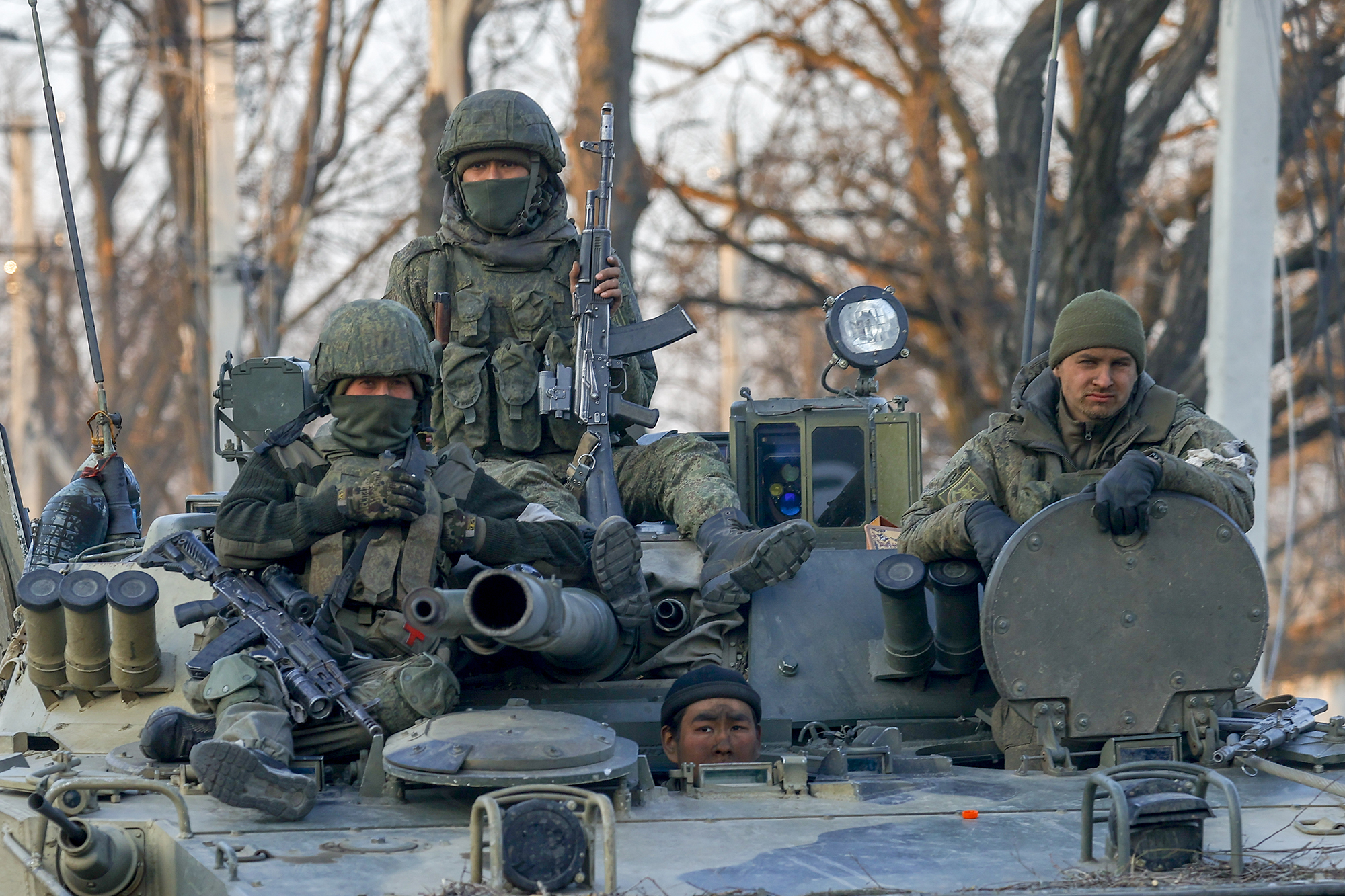 Photo: The Russian force in Ukraine numbers over 460,000 people (Getty Images)
Photo: The Russian force in Ukraine numbers over 460,000 people (Getty Images)
In the Avdiivka direction, there are another 40,000, a large group on the southern flank of the eastern front in the hypothetical direction of Vuhledar, over 100,000. Others are evenly distributed along the southern front with concentrations of up to 10,000 in the Krynky and Kozachi Lagery area on the left bank of the Kherson region. There is also a small group Defense of Crimea with 10-12,000 individuals, which is almost not fully staffed and is only needed for controlling the peninsula.
It's worth noting that in February 2022, the number of Russian troops involved in the invasion was estimated at 180-190,000 individuals. Today, the occupiers in Ukraine are 2.5 times more. This is logical considering the transition of the war into a positional phase and the area of the seized territories.
It is difficult to say how many residents of the Donetsk, Luhansk, Kherson, Zaporizhzhia regions, and Crimea are fighting for Russia. Military and political expert of the Information Resistance Group, Oleksandr Kovalenko, believes that more than 90% of the enemy's army consists of Russians.
A strength of around 460,000 allows holding territories and conducting tactical operations. A strategic offensive under the current circumstances is impossible.
"We see that they are not even able to achieve a tactical advance. They have been trying to encircle Avdiivka for more than three months, which does not indicate the possibility of implementing anything global. For over half a year, the West and Center armies have been unable to break through our fortified area near the small village of Synkivka near Kupiansk. What strategic offensive can we talk about when they have minimal efficiency in advancing by 20-30 meters and capturing two or three strongholds?" notes the expert in a conversation with the news agency.
The size of the Russian army and its combat capability
As of the beginning of 2023, the authorized strength of the Russian Armed Forces was 1.15 million servicemen. At that time, Defense Minister Sergei Shoigu proposed increasing it to 1.5 million people, including contract soldiers - up to 695,000. Additionally, he advocated raising the maximum age for conscription to 30.
Shoigu justified his initiative as a response to the "desire of NATO to increase military potential near Russian borders and expand the alliance at the expense of Finland and Sweden." It should be noted that in 2023, Finland joined NATO, and Sweden is expected to be accepted this year. In parallel, Russia created two new inter-service strategic territorial associations - the Moscow and Leningrad military districts.
In December 2023, Putin increased the strength of the army to 2.2 million, of which 1.33 million are servicemen. The Russian Ministry of Defense decided not to bother with justification.
"The increase is due to the increase in threats to our country associated with the conduct of a 'special military operation' and the expansion of NATO, which continues. In the existing conditions... (this, - Ed.) is an adequate response to the aggressive activities of the NATO bloc," emphasized the department.
Oleksii Hetman finds the argument about the threat from NATO amusing.
"When they start saying that NATO threatens them, I think even inside Russia, it causes a smile in many. No NATO has ever intended to threaten them. Why? What does NATO need the territory in Russia for? They just need to justify the increase in the number of military personnel in the Russian-Ukrainian war. They cannot tell the population that they are unable to defeat our army with the current number, and that they need new cannon fodder. It's primitive, but if such propaganda works, they will continue it," adds the expert.
 Photo: the Russian army is still "second in the world" in rankings, but has significantly undermined its combat capability (Getty Images)
Photo: the Russian army is still "second in the world" in rankings, but has significantly undermined its combat capability (Getty Images)
According to The Military Balance bulletin, the total strength of the Russian military is estimated at 1.2 million personnel:
- Ground forces: 550,000
- Navy: 145,000
- Air Force: 165,000
- Missile forces: 50,000
- Airborne troops: 40,000
- Railway troops: 29,000
- 1st and 2nd Army Corps (so-called Luhansk/Donetsk People's Republic): 30,000
- Command and support: 180,000
In addition, internal troops and other militarized formations make up almost 560,000, with another approximately 1.5 million in reserve across all branches of the military.
Russia maintains a high military headcount and possesses the world's second-largest nuclear arsenal. However, the invasion of Ukraine revealed several shortcomings in terms of leadership, planning, personnel, and the ability to resist a strong opponent. The ground forces, in particular, suffered significant losses in tanks, armored vehicles, and personnel. Independent assessments vary, but some units became non-combat-ready. The Navy and Air Force also experienced serious losses, as noted in the bulletin.
Despite this, Russia remains the "second-largest army" in the world, according to the Global Firepower Index. While this index considers overall military strength, it is not endorsed by scientists or any government but does not claim to be definitive. According to the index, Moscow leads in areas such as the number of military personnel, mobilization capability, tanks, fighter aircraft, missiles, ships, and more.
"I really love these rankings; they are phenomenal. The thing is, when Russia suffers defeat in a war against Ukraine, when it is completely defeated, it will still remain the 'second-largest army' in these rankings. Because it has nuclear weapons. Rankings are based on the ability to deliver strikes. And as long as Russia has more nuclear weapons than China, it will always be second," says Oleksandr Kovalenko.
The reality is quite different.
"Of course, militarization has increased significantly in two years, but at the same time, the degradation of technical and technological capabilities is much greater. At best, this army is in the top 10 even without a nuclear component," he explains in a conversation with RBC-Ukraine.
When will the next wave come, and how many Russians can Putin mobilize?
After the partial mobilization in 2023, the Russian authorities began a campaign to sign contracts. As of mid-December, according to Putin, 486,000 people had been recruited, and by the end of 2023, the figure was expected to increase to 500,000. Therefore, a new mobilization is not planned, at least not yet.
"Why do we need mobilization? There is currently no need for it," he said.
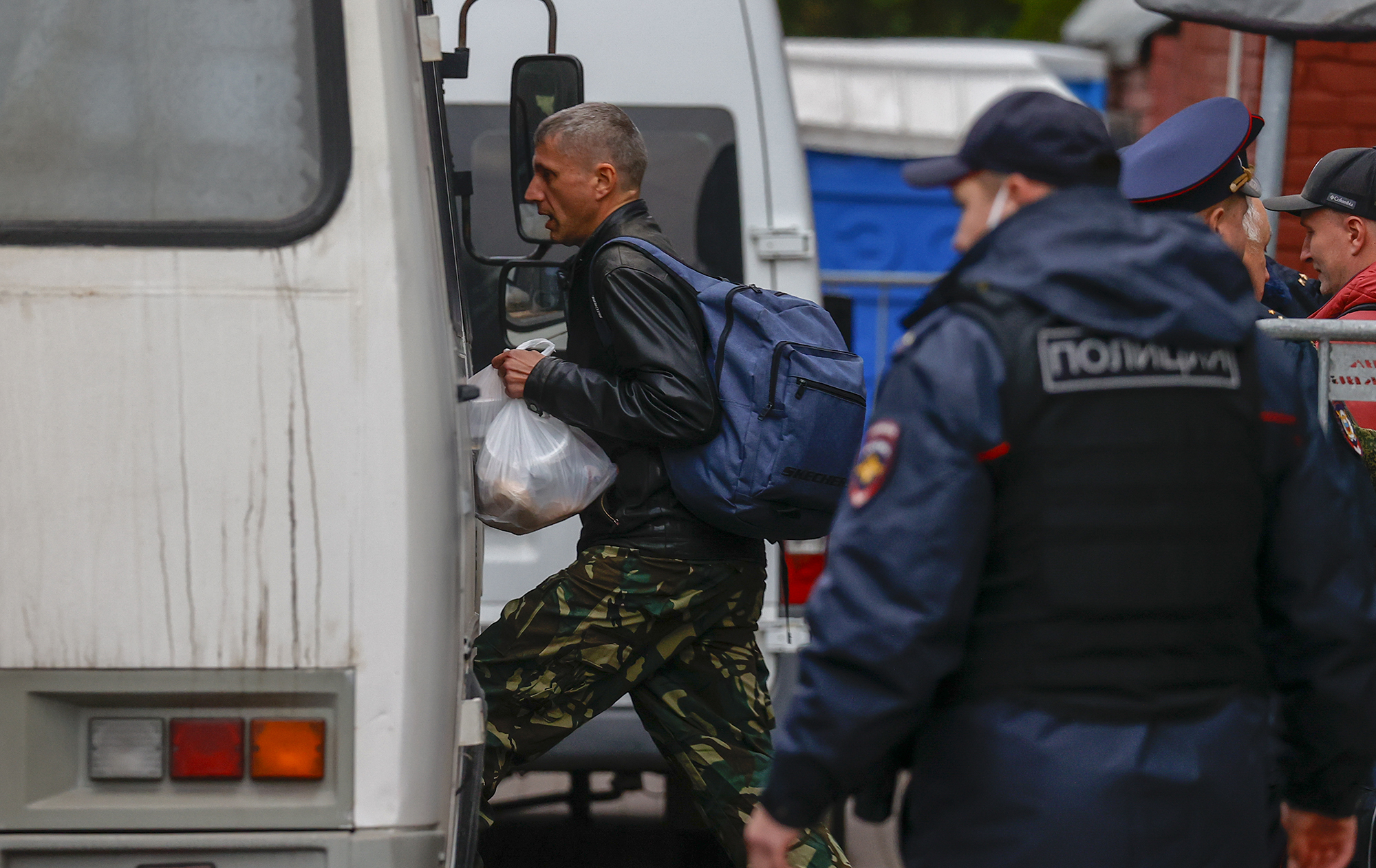 Photo: a new mobilization in Russia is likely to begin after Putin's elections (Getty Images)
Photo: a new mobilization in Russia is likely to begin after Putin's elections (Getty Images)
As Vadym Skibitskyi, a representative of the Defense Intelligence of Ukraine, revealed, contracts for approximately 1,000-1,100 individuals are signed daily, totaling around 30,000 per month. This recruitment is primarily aimed at replenishing losses. However, a true mobilization is necessary to create a powerful strategic reserve.
"Will Putin dare to do this? Unlikely before the elections. And beyond that - we'll see. It's too early to talk about it now. But all the conditions for mobilization in Russia have been created at any time," he said in early January.
Experts interviewed by RBC-Ukraine agree but emphasize a few points. For instance, mobilizing up to 30,000 Russians per month currently does not fully compensate for the losses.
"According to generally accepted statistics, for every killed soldier, there are at least two wounded. That's about 60,000 more casualties. As a result, they are losing close to 100,000 per month, including both killed and wounded. The balance remains negative. They may hold on at this pace for another month or two, but then they need to intensify mobilization. There is no other way to maintain the required manpower," explains Oleksii Hetman.
Mobilization is not expected until March because, even with Putin's high support, it's an unpopular decision, and he won't risk it before the elections. Additionally, losses will likely increase as Russians are expected to exert all efforts to achieve some success on the front and showcase their "special military operation" according to the plan, notes the expert.
According to Oleksandr Kovalenko, the upcoming campaign for recruiting Russians into the army could be called anything but mobilization.
"They need a human resource like air because in the offensive they started in 2023, there are significant losses that need to be compensated. If they don't do this and keep the mobilization potential at the level of 25-30 thousand per month, they won't be able to compensate not only for the killed and wounded but won't be able to restore rotational units," he emphasizes.
According to the expert's estimates, the pace of mobilization in Russia could rise to 40-50 thousand per month.
"About 500 thousand by the end of the year. But they won't conduct it like in the fall of 2022. Then they mobilized 100 thousand per month, and the system almost collapsed. I think Russia will use a light version within the range of 50 thousand per month to avoid overloading the system. And this can meet the needs for mobilization resources," Kovalenko notes.
At the same time, it's not advisable to expect the opponent to have a pain threshold, meaning a critical number of casualties or deployments to war that would force ordinary citizens of the Russian Federation to protest, overthrow Putin's regime, or reject the war.
"The question here is how many resources they have to mobilize tens of thousands per month and provide for them. Our war is not in the format of waiting for them to change their minds. The war is about attrition, and we are doing everything to make it harder for them to sustain aggression against us, including providing for their troops. But there is no pain threshold," concludes the expert.
